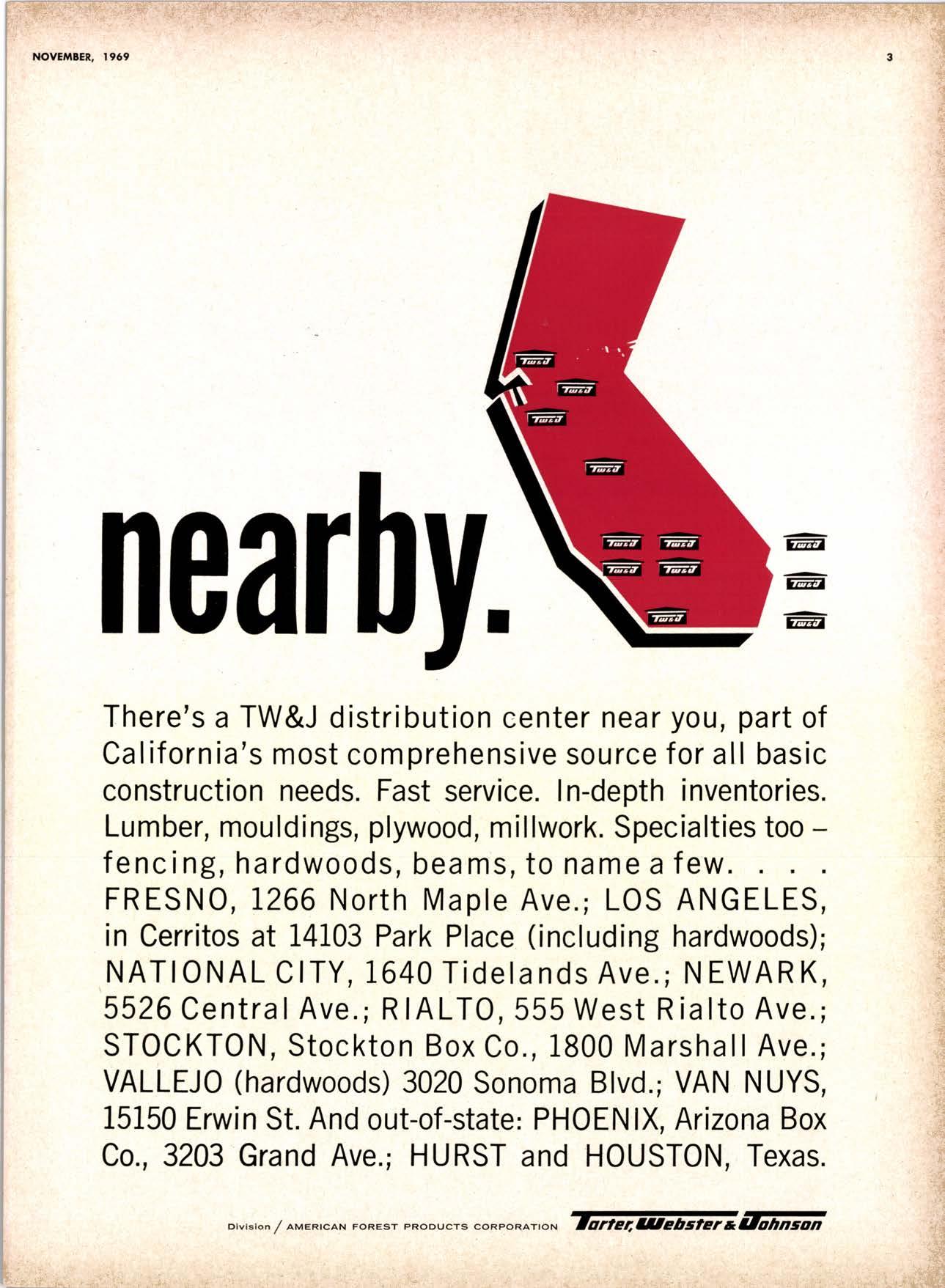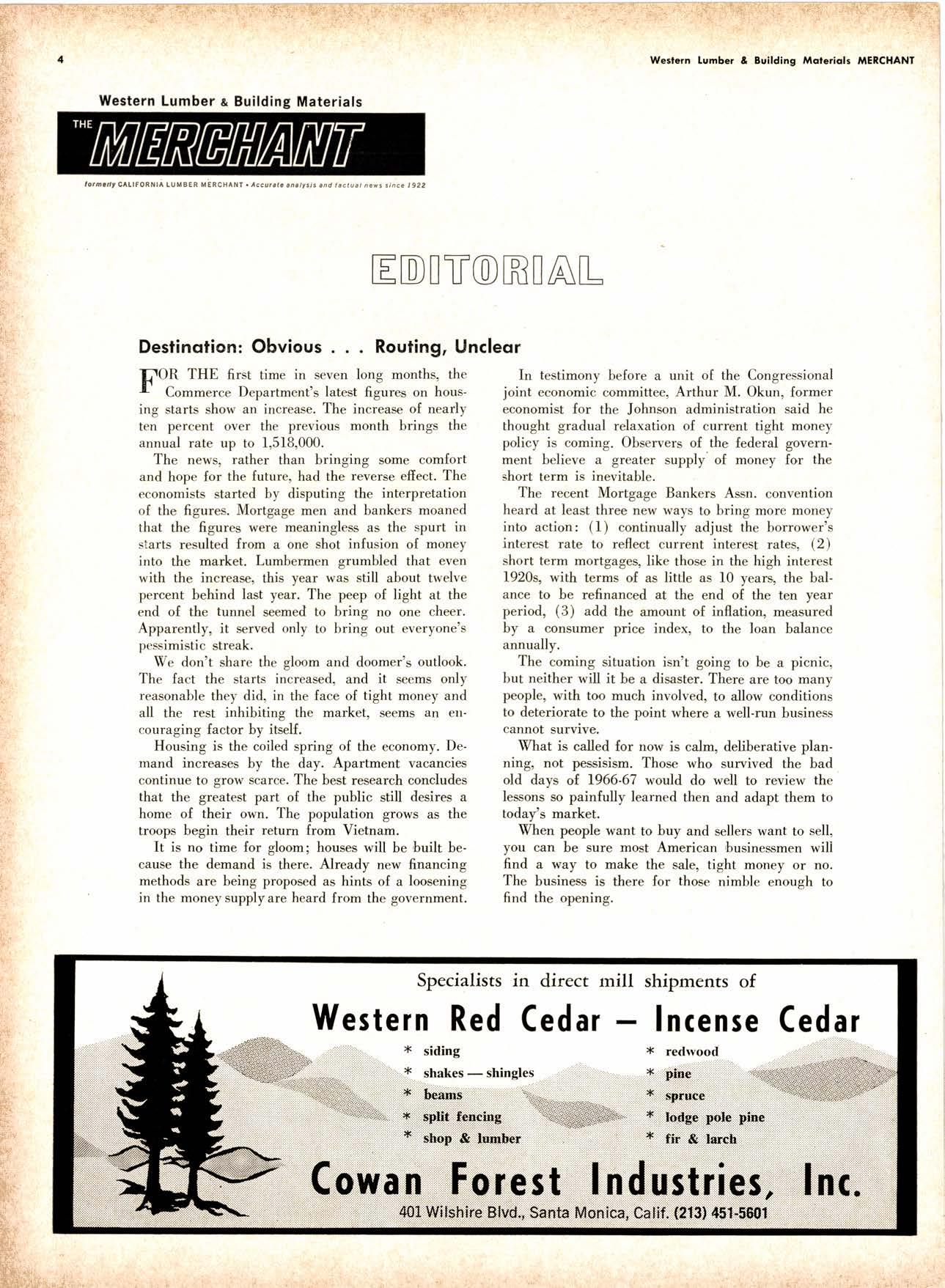
2 minute read
nearhy.
There's a TW&J distribution center near you, part of California's most comprehensive source for all basic construction needs. Fast service. I n-depth inventories. Lumber, mouldings, plywood, ffiillwork. Specialties toofencing, hardwoods, beaffis, to name a few. . . .
FR ESNO , 1266 North Maple Ave.; LOS ANGELES, in Cerritos at 14103 Park Place (including hardwoods);
NATIONAL CITY, 1640T idelands Ave.; NEWARK, 5526 Central Avo.; R lALT0, 555 West Rialto Av€.; STOCKTON, Stockton Box Co., 1800 Marsha Il Ave.;
VALLEJO (hardwoods) 3020 Sonoma Blvd.; VAN NUYS, 15150 Erwin St. And out-of-state: PHOEN lX, Arizona Box Co., 3203 Grand Ave.; HURST and HOUSTON, Texas.
Destinotion: Obvious . Routing, Uncleor
THE first time in seven long months, the r Commerce Department's latest figures on housing starts sho* att increase. The increase of nearly ten percent over the previous month brings the annual rate up to 1,518,000.
The news, rather than bringing some com{ort and hope for the future, had the reverse efiect. The economists started by disputing the interpretation o{ the figures. Mortgage men and bankers moaned that the figures were meaningless as the spurt in starts resulted from a one shot infusion oI money into the market. Lumbermen emmbled that even with the increase, this year was still about twelve percent behind last year. The peep of light at the end of the tunnel seemed to brine no one cheer. Apparently, it served only to l,rin[ out everyone's pessimistic streak.

We don't share the gloom and doomer's outlook. The fact the starts increased, and it seems only leasonable they did, in the face of tight money and all the rest inhibiting the market, seems an eucouraging factor by itself.
Housing is the coiled spring of the economy. Demand increases by the day. Apartment vacancies continue to grow scarce. The bes't research concludes that the greatest part of the public still desires a home of their own. The population grows as the troops begin their return from Vietnam.
It is no time for gloom; houses will be built because the demand is there. Already new financing methods are being proposed as hints of a loosening in the moneysupplyare heard from thc government.
In testimony before a unit of the Congressional joint economic committee, Arthur M. Okun, former economist for the Johnson administration said he thought gradual relaxation of current tight money policy is coming. Observers of the federal government believe a greater supply of money for the short term is inevitable.
The recent Mortgage Bankers Assn. convention heard at least three new ways to bring morc money into action: (l) continually adjust the borrower's interest rate to reflect current interest rates. (2) short term mortgages, like those in the high interest 1920s, with terms of as little as I0 years, the balance to be refinanced at the end of the ten year period, (3) add the amount of inflation, measured by a consumer price index, to the Ioan balance annually.
The coming situation isn't going to be a picnic, but neither will it be a disaster. There are too many people, with too much involved, to allow conditions to deteriorate to the point where a well-run business cannot survive.
What is called for now is calm, deliberative plan. ning, not pessisism. Those who survived the bad old days of 1966-67 would do well to review the lessons so painfully learned then and adapt them to today's market.
When people want to buy and sellers want to sell, you can be sure most American 'businessmen wili find a way to make the sale, tight money or no. The business is there {or those nimble enoush to find the opening.








